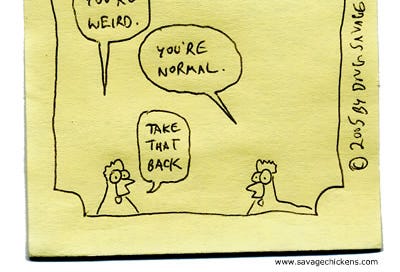On a bike ride with my four-year-old the other day, I experienced one of the distinct horrors of parenthood: the “did-MY-kid-just-say-that-in-public?!” moment. “Mama, why is that man so little?!” he shouted, pointing at a man who was, indeed, much smaller than most adults, perhaps due to some kind of Achondroplasia (commonly called “dwarfism” (this article is an oldie but goodie about the language we use around this group).

Too shocked to plan a response, I said the first thing that came into my mind, which was “because people have different bodies.” My son accepted my response, because kids are better people than adults, and the man smiled and told us to have a good day.
I try to tell my child the truth, except about Santa, which I will lie about to the last possible day. The truth is we do all have different bodies, and different minds, and different ways of doing subtraction or showing people we love them or expressing anger. The idea of a “normal” way of doing things and an “abnormal” way is about as old-fashioned as writing a personal check. Being inclusive means that you cast off this old dichotomy and chart a course for a less-explored, more exciting and accurate way of seeing things.
The inclusive educator:
Believes that all brains are different, and none are better worse than any other, just better suited for certain tasks and environments.
Recognizes that all students are their students, even if some are labeled “special ed” or “ELL” or “gifted.”
Understands that school is not a natural environment for little brains, and that kids are working very hard, though some have to work harder than others.
Tolerates different students learning different things through different modes and at different paces.
Notices their own ableism and calls it out with self-compassion.
Talks to children about all of these ideas, and teaches them to respect their own minds and the minds of others.

In this newsletter, you will get a weekly dose of new ideas from research and practice, challenges to old ways of thinking, anecdotes from the field, and practical strategies for teaching a wide range of students.
I mostly talk here about being inclusive of different learning styles and behaviors, but the great thing about being an inclusive educator is that when you say “everyone is welcome here,” everyone feels it.
Welcome. And thank you for including me on your journey.




